Dachshund Breed Info


The Dachshund, a small and spirited breed, is known for its long body, short legs, and extraordinary character. Originally hailing from Germany, the Dachshund was bred to hunt small game, such as badgers and rabbits.
These tenacious dogs are now cherished family pets that are loved for their intelligence, playfulness, and devoted nature. They come in three coat types (smooth, wirehaired, and longhaired) and two sizes (standard and miniature) to suit various lifestyles.
Although dachshunds can sometimes exhibit a stubborn streak, they are generally eager to learn and can be easily trained with patience and consistency. Using positive reinforcement techniques and engaging their natural curiosity, dachshunds can excel in a variety of activities, such as obedience training, agility, and scent work. Early socialization and training are crucial to help your dachshund develop into a well-rounded and well-behaved pet.
Characteristics
- Courageous: Dachshunds are brave and fearless, often showing a surprising amount of courage for their size.
- Loyal: They form strong bonds with their owners and can be fiercely protective of their families.
- Playful: Dachshunds have a lively spirit and love engaging in playtime, whether indoors or outdoors.
- Intelligent: These dogs are highly intelligent, which can make them both rewarding and challenging to train.
- Stubborn: Despite their smarts, Dachshunds can also be quite stubborn, often wanting to do things their way.
- Affectionate: They are known for their loving nature, enjoying cuddles and attention from their favorite humans.
- Alert: Dachshunds have a keen sense of awareness and make excellent watchdogs, quickly alerting their owners to anything unusual.
- Adaptable: They can thrive in various living situations, from small apartments to large homes with yards, as long as their needs are met.

Appearance
The dachshund's elongated body, often referred to as a "sausage" or "wiener" shape, is supported by a strong and flexible spine, which allows them to bend and twist through tight spaces with ease. Their short legs, equipped with powerful muscles, enable them to dig and maneuver in the confined spaces of burrows while hunting. Despite their small stature, dachshunds possess a proud and confident gait, carrying their long bodies with elegance and grace. Their expressive eyes and floppy ears lend them a friendly and endearing appearance, making them a favorite among dog lovers worldwide.
Dachshunds are available in two main sizes: standard and miniature. Standard dachshunds generally weigh between 16 and 32 pounds, while their miniature counterparts weigh 11 pounds or less. Both size variations feature the iconic long body and short legs that define the dachshund breed. Moreover, dachshunds sport three distinct coat types: smooth, wirehaired, and longhaired. Smooth coats are short and glossy, wirehaired coats are thick and coarse with distinctive facial hair, and longhaired coats are elegant, silky, and slightly wavy.
The dachshund's diverse color palette further contributes to the breed's appeal. Solid colors such as red and cream are common, while bi-color combinations often include black, chocolate, wild boar, or fawn paired with tan or cream accents. Dapple, brindle, and piebald patterns offer additional variety in the dachshund's appearance. With such a wide array of size, coat type, and color options, the dachshund breed caters to a broad range of personal preferences, making it a favorite among dog enthusiasts around the world.
Temperament
Dachshunds are known for their playful and enthusiastic nature, always ready for a game or a fun-filled activity. Their love for play not only keeps them entertained but also strengthens the bond between them and their owners. The dachshund's exuberance makes them ideal companions for individuals and families seeking a lively and interactive pet.
The dachshund's friendly and affectionate personality makes them well-suited for families with children. They are generally patient and gentle with kids, although they may be better suited for families with older children who can understand how to handle a small dog safely. Proper supervision and guidance are essential to ensure a harmonious relationship between dachshunds and children of all ages.
Dachshunds have an innate love for adventures and exploration, thanks to their hunting heritage. They enjoy going on walks, hikes, and participating in outdoor activities with their owners. This adventurous spirit makes dachshunds an appealing choice for those who appreciate a companion that shares their love for the great outdoors.
Dachshunds are sensitive and affectionate dogs that thrive in a loving and nurturing environment. They form strong bonds with their owners and families, providing unwavering companionship and loyalty. A dachshund will be at its happiest when surrounded by the warmth and affection of a caring family.
Care
Grooming
Dachshunds, known for their unique physique and captivating charm, require regular grooming to keep their coats healthy and their appearance neat. Grooming is not only essential for maintaining a clean appearance but also for promoting the overall well-being of your dachshund.
Dachshunds come in three distinct coat types: smooth, wirehaired, and longhaired. Each coat type has unique grooming requirements to ensure optimal health and cleanliness.
- Smooth-coated Dachshunds: These dogs have a short, sleek coat that requires minimal grooming. A weekly brushing using a soft-bristle brush or rubber grooming mitt should suffice in removing loose hair and keeping the coat shiny. Smooth-coated dachshunds shed moderately, so regular brushing will help control the amount of hair around your home.
- Wirehaired Dachshunds: Wirehaired dachshunds have a coarse, dense coat that requires more frequent grooming. Weekly brushing with a slicker brush or a comb with wide-set teeth is recommended to remove loose hair and prevent matting. Wirehaired dachshunds also need their coats hand-stripped or professionally groomed every few months to maintain a healthy, neat appearance.
- Longhaired Dachshunds: Longhaired dachshunds have a silky, flowing coat that demands more attention when it comes to grooming. Regular brushing, at least twice a week, with a slicker brush or a comb with both wide and narrow teeth will help prevent tangles and mats while keeping the coat soft and shiny. It is also important to pay special attention to the hair behind the ears and under the legs, as these areas are prone to matting.
In addition to coat care, dachshunds require regular nail trimming, ear cleaning, and dental care. Their nails should be trimmed every few weeks to prevent overgrowth, which can lead to discomfort and potential injury. Ears should be checked and cleaned weekly using a gentle ear-cleaning solution and cotton balls to remove debris and prevent infections. Maintaining your dachshund's dental hygiene is crucial; brushing their teeth several times a week with a dog-specific toothpaste will help prevent plaque buildup, bad breath, and oral health issues.
Exercise Needs
Despite their small size and short legs, Dachshunds have a surprising amount of energy and require regular exercise to maintain their health and happiness.
As hunting dogs bred for stamina and endurance, Dachshunds need daily exercise to burn off energy, maintain a healthy weight, and prevent boredom. Aim for at least 30 minutes of physical activity per day, which can be divided into multiple shorter sessions if necessary.
Regular walks at a moderate pace are ideal for Dachshunds, allowing them to explore their surroundings and socialize with other dogs. Keep your Dachshund on a leash to ensure their safety and prevent them from chasing small animals.
Dachshunds love interactive games like fetch or hide-and-seek, which not only provide physical exercise but also mental stimulation. Be mindful of their elongated spine, and avoid activities that require excessive jumping or sudden twists.
On days when outdoor exercise isn't feasible, engage your Dachshund in indoor activities such as puzzle toys, treat-dispensing toys, or even a game of gentle tug-of-war.
Due to their unique body structure, Dachshunds are prone to spinal issues, such as intervertebral disc disease (IVDD). Avoid high-impact activities or excessive stair climbing, and always monitor your Dachshund for signs of discomfort during exercise.
Health
Dachshunds are a wonderful breed that, when bred by reputable breeders, can be quite healthy and resilient. While they may be prone to certain health issues, these concerns can often be prevented or managed through proper care and attention.
When puppies come from reputable breeders, they are typically bred for health and longevity, with careful selection of breeding pairs and genetic testing. This greatly reduces the likelihood of certain health concerns that may be common in poorly bred Dachshunds. However, it's still important to be aware of potential health issues, such as:
- Dental issues: Like many small breeds, Dachshunds may be prone to dental problems such as tooth decay and gum disease. Regular teeth brushing and dental check-ups can help keep their mouths healthy and free of infections.
- Eye problems during old age: As Dachshunds age, they may be at risk for developing eye problems such as cataracts, glaucoma, and progressive retinal atrophy. Regular veterinary check-ups and monitoring your dog's vision can help detect and manage these issues.
By being aware of these potential health concerns and providing your Dachshund with the proper care and attention they need, you can help ensure they lead a long, healthy, and happy life.
Lifespan
Dachshunds are a breed that can enjoy a relatively long life compared to many other breeds, with an average lifespan of 12-16 years. With proper care, attention, and love, Dachshunds can thrive and enjoy many years of happiness with their owners. Regular veterinary check-ups, a healthy diet, and regular exercise can all contribute to extending their lifespan and ensuring they remain healthy and happy throughout their lives. By providing your Dachshund with the care they deserve, you can enjoy many wonderful years of companionship and joy together.
Training
Dachshunds are a breed known for their stubbornness, and as such, training them can be a challenge. However, with patience, consistency, and positive reinforcement, they can be trained successfully.
One of the most important things to keep in mind when training a Dachshund is that they respond well to positive reinforcement. They are sensitive dogs and can become easily overwhelmed by harsh or negative training methods. Instead, using praise, treats, and other rewards can help encourage good behavior and make training a more positive experience for both you and your dog.
Consistency is also key when training a Dachshund. Establishing clear rules and boundaries and enforcing them consistently will help your dog understand what is expected of them. This can include teaching them basic commands such as "sit," "stay," and "come," as well as house training and socialization.
Socialization is particularly important for Dachshunds, as they can be wary of strangers and other dogs if not properly socialized from a young age. Exposing them to a variety of people, animals, and environments can help them become well-adjusted and confident.
While Dachshunds may be stubborn and challenging to train, with patience, consistency, and positive reinforcement, they can become well-behaved and obedient companions. It's important to start training early and remain patient and consistent throughout the process, as this will help ensure your Dachshund develops good habits and remains a happy and well-adjusted member of your family.
History
The Dachshund's history can be traced back to 15th-century Germany, where they were initially bred to hunt small game, particularly badgers. The breed's name, "Dachshund," comes from the German words "Dachs," meaning badger, and "Hund," meaning dog. Their unique body shape and courageous spirit made them well-suited to navigate the tight tunnels and burrows of their prey.
Over time, the breed evolved, with the development of the wire-haired and longhaired varieties, as well as the miniature size.
The Dachshund's popularity grew beyond Germany, and by the early 20th century, they had become cherished companions worldwide. Today, they continue to captivate the hearts of dog enthusiasts with their unmistakable appearance and lively personalities.
